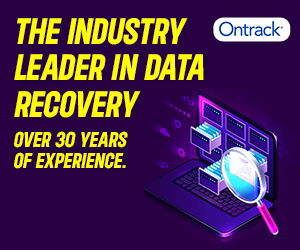Data is one of the most important resources a company has. It’s what allows businesses to make informed decisions, stay ahead of the competition, and keep track of their progress. However, many companies still struggle with data strategy. They may have a lot of data, but they don’t know how to use it effectively. That’s where data science comes in. Data science is the process of extracting insights from data and turning them into actionable plans. It can be used to improve decision-making, understand customer behavior, and much more. If you’re looking to improve your data strategy, or if you’re just starting out and want to learn more about data science, this article is for you.

Contact A Professional
When it comes to data strategy, it’s often best to consult a professional. Experienced data scientists can help you design an effective data strategy that meets your goals and fits into your budget. A good data scientist will be familiar with both the technical and business sides of data science, so they can ensure that your strategy is tailored to your specific needs. You can have your data simplified and easier to understand, or you can have it analyzed to uncover trends and insights that will help you make better decisions. This can help you save time, money, and resources.
Choose the Right Tools
The right data strategy requires the right tools. From data visualization to machine learning algorithms, there are many different technologies you can use to make sense of your data. Knowing which ones are best suited for your specific needs can be tricky, but it’s important to select the right tools for your project. You should also ensure that these tools are secure and compliant with any applicable regulations or laws.
Optimize Performance
Once you’ve chosen the right tools, it’s time to optimize performance. This means testing different approaches and experimenting with different models to find the one that works best for your data. It also means making sure that your data is clean and organized, so it can be easily accessed and used. Finally, it’s important to monitor the performance of your data strategy over time, so you can make changes as needed.
Determine Your Goals
Before creating a data strategy, it’s important to know what your goals are. Do you want to improve decision-making? Understand customer behavior? Identify opportunities for growth? Once you have a clear goal in mind, you can start to develop a strategy that will help you achieve it. When setting goals, be sure to consider the resources you have available, as well as your budget and timeline.
Develop an Action Plan
Now that you have an idea of your goals and the tools you need to reach them, it’s time to create an action plan. This should include identifying specific tasks, such as creating reports or performing analysis on the data, as well as setting deadlines for when those tasks should be completed. Once you have your action plan in place, you can start to implement it and track the results. It’s also important to periodically review your data strategy and make changes as needed. This will help ensure that your data strategy is always up-to-date and help you reach your goals.
Choose Your Data Sources
Once you have a data scientist on board, it’s time to decide what kind of data you want to use. There are many sources of data available, including customer surveys, website analytics, and third-party databases. Different types of data can offer different insights into your business, so think carefully about what data you want to use. Depending on your goals, it may be worth investing in more reliable sources of data. For example, if you want to use data to make better decisions, it may be worth investing in a paid database or subscription service. Or if you want to understand customer behavior, it may be worth investing in a survey platform. It’s also important to consider the cost of acquiring new data sources and make sure that they are within your budget.

By following these steps, you can create an effective data strategy that meets your goals and fits into your budget. With the right tools and strategies in place, you can unlock powerful insights and make smarter decisions with your data. Once you have implemented your data strategy, it’s important to test and measure its performance. This means tracking the results of your actions and assessing how they contribute to your goals. You should also use data visualization tools to monitor any trends or changes in the data over time. We hope that this article was helpful!





